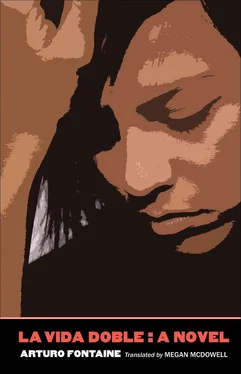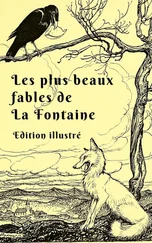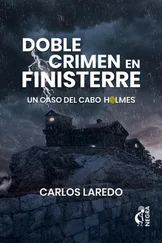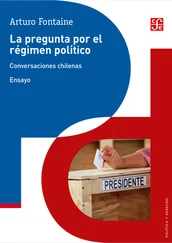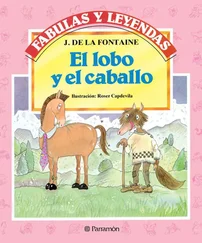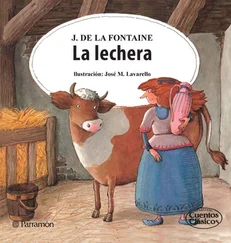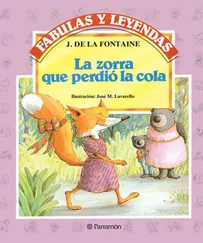Was Rafa interested in me? He never said so. He thought I was pretty. He did tell me that, and I loved that he told me, but I didn’t believe him. I didn’t feel pretty. And to me, Rafa was a great friend and nothing more. If he’d taken one wrong step. . Several times I thought he was about to. It would have ruined our friendship. During that time, I pulled down the posters of Mick Jagger, Robert Redford, Peter Fonda, Julio Iglesias, and Led Zeppelin from the walls of my room. Now the faces looking down on me were Violeta Parra, “La Negra” Mercedes Sosa, and two great bearded men, Karl Marx and Che Guevara.
We were a guild of students who studied almost nothing but the Sacred Scriptures of Marx (those of the young Marx more than the older) and Engels (I remember soporific afternoons trying to get through the Anti-Dühring ) and, of course, our church fathers: Lenin, Trotsky, Rosa Luxemburg, Gramsci, Althusser, Sartre, De-bray, speeches and articles by Mao, by Che. . The job was harder because we knew so little of the history that most of these works presupposed. I don’t know how much we understood, but the thing was to carry those huge volumes under our arms and quote them every chance we got. We did political and organizational — now I would call it “evangelical”—work among the peasants and workers who, armed with red banners, knives, shovels, chains, and a few sawed-off shotguns, forcibly seized urban terrain and agricultural fields. But Rafa would rant and rave against the “extremists” who, with their “military apparatus,” as he said in an ironic tone, with their bank heists and Vietnamese IEDs, were just playing into the hands of the reactionaries who wanted a military coup. In the evenings we drank red wine and sang along to songs by Violeta, Mercedes, Ángel, Isabel, by Víctor Jara, Quilapayún. . To sing is to wait. And we were living in a time of Advent.
Months later the presidential palace, La Moneda, was in flames. I’ll never forget that image framed by the television: the strength of its walls resisting the fire, the structure’s sheer will to survive. I was tormented by thoughts of those who died, but above all by thoughts of Rafa, Teruca, and the other comrades, men and women, friends I didn’t dare call. I shut myself in, fell into bed, and wasted away. When Anita was born, it was an unimaginable joy that was, moreover, egalitarian. Almost any woman, I thought recklessly, has this happiness within her reach. My mother, always so cold, welcomed Anita like her own child. She was more loving with Anita than with me, I think.
Then one day Rafa showed up at my house and he was fine, which disappointed me a little. Teruca was safe, too. He’d be calling me soon, he told me. He hadn’t called before for reasons of security. Some weeks later we met up with Teruca at Rafa’s mother’s house, which was on Calle Los Gladiolos. I brought my Anita with me wrapped in layers of shawls. Teruca, who had cut off her thick, black braid, made such a fuss over her you would have thought she was my older sister. Francisco, her son, watched her with his big, dark eyes. She told me in private that Rafa had been arrested. He’d been held in the Ritoque concentration camp. Of course, he’d taken a bad beating. He didn’t talk about that. Didn’t want to.
It was Rafa who put me in touch — years later, of course — with Canelo. Rafa had changed by then. Now he believed only in armed resistance. We met at Tavelli for a coffee. It was a dangerous meeting, he told me, and I was pleased.
Well. . Canelo had entered Chile secretly. Toward the end of the seventies he had been one of the founders of the Red Ax movement, which gradually absorbed groups from the Elenos, 1from Organa, 2from Bandera Roja, from Espartaco and other far left groups. They were all convinced that an unarmed revolution would never be a revolution. They were part of what was known as the “revolutionary pole,” the ones Rafa used to criticize, the ones who wanted to create one, two, three Vietnams. . There aren’t many who want to remember the infighting of those days. Canelo didn’t avoid the issue that first day.
For the brothers and sisters of Red Ax, Allende’s “legal path” had only been the opening act. You said you wanted historical facts, here’s one, the kind people don’t like to hear anymore: Fidel, Ho Chi Minh, they were also ambivalent in the beginning. Shortly after the military coup, Canelo left Chile and headed for Cuba. One of his teachers was the legendary Benigno, who fought in Bolivia until the end at Quebrada del Yuro, where they captured Che. Benigno escaped into Chile, wounded, with a fever of 104 degrees. The bullet had entered his shoulder and lodged near his spinal column; they extracted it in Santiago.
Later, Canelo would fight as one more Cuban soldier under the orders of General Ochoa in Ogaden, Africa. His unit, made up of Ethiopians and Cubans, crossed undetected through the mountains and took up a position behind the Somali troops who were defending the Mardas Pass, in order to attack them in a cunning pincer movement. Jijiga fell within two days, and all the other towns fell quickly one after another like dominos. In a month, Siad Barr, who was receiving support from the Yankees — this was, don’t forget, the middle of the Cold War — ordered his troops to retreat to Somalia. Ethiopia won. The eighteen thousand Cuban soldiers with their six hundred Soviet tanks turned out to be decisive in the war. And Canelo was there. Later he joined the FMLN. He fought for three years in the guerrilla war in El Salvador.
I’m telling you about ancient, epic times, times of war aristocracies that live for death and honor. Nothing that would make any sense to you today, right? Che Guevara was an “international partisan,” a man with a Bolivarian vocation, a knight errant. The stuff of legend. Everywhere you looked in Latin America back then there was another fabulous Amadís of Gaul, a Palmerín, a Tirant lo Blanc or Florismarte, who all wandered the earth in search of adventure with their swords at the ready, to set right every wrong, to succor the needy and destitute, redress iniquity, and amend injustice. But, of course, this time there were also ladies errant, and they did not lag behind the knights in courage or derring-do. We all wanted to recover that happy age to which the ancients gave the name of golden , because they that lived in it knew not the two words “mine” and “thine”! In that blessed age all things were common. . It wasn’t only happening in Latin America, either. Here in Europe, for example, you had the Brigate Rosse and the Rote Armee Fraktion, or Baader-Meinhof Komplex. Back then we lived confidently, auguring and weaving the future. And all the while at our backs, history, tight-fisted, dirty, vulgar history, was preparing to wash right over us like the giant wave of a tsunami.
He had short, light-colored hair, small, alert eyes, lips that were too thin. He wore a tie and a light gray suit. No long, sloppy hair or beard; no pipe or Cuban cigar, no poncho or leather jacket. Nothing that would suggest the combatant who had fought so bravely in the Ogaden desert or on Guazapa hill in El Salvador, where he slept in a dugout. He could have been a lawyer or an insurance agent. He told us about our commander, about his story.
Joel Ulloa was a simple teacher of history and geography at a high school in Valdivia. At that time Che was moving deeper into the jungle in the mountains along the Ñancahuazú River in Bolivia. Joel Ulloa abandoned his routine of blackboards and test correcting. He was disgusted, he said, by the hypocrisy of Chile’s staid, bourgeois democracy. To make the Andes into the Sierra Maestra of the Americas: that was the goal. Canelo showed us a photo: glasses and black hair combed away from his face. Shaved beard, Asiatic eyes, ample nose and mouth. His mission was to lift up the Mapuche people and take back their land. Canelo told us how the Mapuches, who were used to revolutionaries with long hair and a shaggy, bohemian look, were impressed by this schoolteacher who showed such great practical sense when it came to organizing a battle, and later, too, with the work in the fields they occupied by force. They said he had never known lincanquén, fear.
Читать дальше
